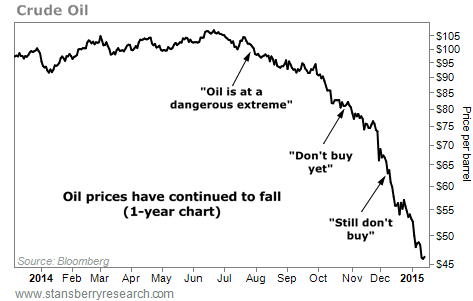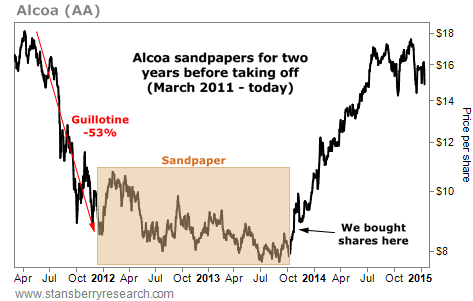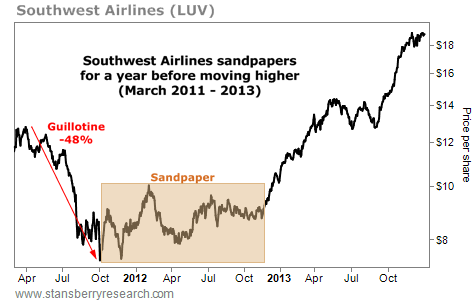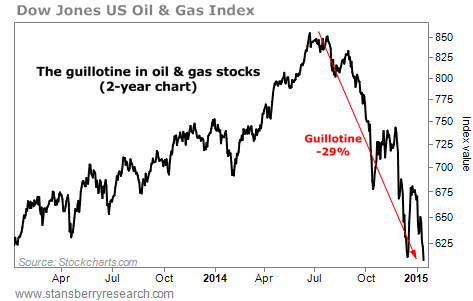It's called hubris — when you think you know so much that you stop looking for reasons you might be wrong.
One of the best examples was the Nobel Prize-winning economists who started a hedge fund called Long-Term Capital Management (LTCM). Their computer models worked great, scalping a few pennies each off of trillions of dollars of bond trades. And so long as their fundamental assumptions about their trades didn't change, they made money.
But when Russia defaulted on its bonds in 1997, LTCM blew up in spectacular fashion. These Nobel Prize winners were leveraged to the hilt on the assumption that bonds never default.
But really, that's a stupid thing to think. It may be difficult to pinpoint exactly when it will happen, but you can count on the fact that at some point, some country will be unable to pay its debt. To wager billions otherwise is just insane.
LTCM was leveraged so deeply that its failure shook the global financial system.
It was the same when insurance company AIG wrote insurance on trillions' worth of mortgage derivatives. The assumption was that U.S. home values would never decline and that mortgage default rates would never go above 2%...
Once again, the global financial system was brought to the brink of disaster. And seven years later, it hasn't fully recovered.
We can blame the Fed, mortgage companies, Congress, banks, and homeowners — but the human tendency to assume that we've got it all figured out was the real cause of the financial crisis. So you can bet it's gonna happen again.
Can't See the Forest
Even the "smartest" people can get so focused on the details, so consumed by the specifics of their area of expertise, that they simply can't see the big picture.
But that doesn't mean the big picture doesn't exist.
I'm not sure I even want to be a smart man if it means getting so focused on the trees that I can't see the forest. A couple times a year, I might come up with a truly inspired idea. The solid investment results I generate for subscribers to The Wealth Advisory are mostly the result of hard work: I do the research, I run the numbers, and I let them tell me if a particular investment is a good idea.
My best asset is experience. I've seen a lot in the stock market over the last three decades: the Asian currency crisis in the '90s, the Internet boom and bust, two Iraq wars, the post-9/11 recession, an oil super-spike, the Alan Greenspan Fed, the subprime mortgage crisis, interest cuts, hikes, and so on.
I knew stocks were bottoming in March 2009. And I knew beyond a doubt that the ensuing bull market would last years...
But there's something I don't understand right now: I am troubled by my inability to reconcile one particular chart with what I am seeing in the stock market.
Here's the chart that is keeping me up at night...
It's not just one region. Asia, Europe, North America — manufacturing data around the world is coming up short of expectations. At the same time, the S&P 500 and the Nasdaq are hitting new all-time highs.
New highs for stock prices are usually assumed to mean investors see better economic growth ahead that will allow companies to sell more stuff, increase revenue, and make more money. And if you simply pay attention to earnings, the fact that around 75% of S&P 500 companies are beating first quarter earnings expectations probably makes you feel okay about stock prices.
But for me, the fact that right around 50% of S&P 500 companies are missing revenue estimates is a problem. Companies aren't selling as much stuff. Manufacturing activity is falling. Durable goods orders are falling. U.S. business equipment spending has fallen seven months in a row.
U.S. economic data is missing projections by the most since the financial crisis. Something's got to give here. Either economic data has to do an about-face and improve, or stock prices have to come down.
Earnings are the lifeblood of the stock market. When earnings are growing, stock prices can move higher as investors see better times ahead. When earnings are not growing or shrinking, investors will no longer pay higher prices for stocks.
Surprisingly, economic data is not always perfectly correlated to growing earnings. When interest rates come down, stock prices can rally even if economic data hasn't improved. And if economic data falls but not as badly as investors expect, stocks can also rally.
But today, with stock prices at record highs and the Fed mulling rate hikes, it's a bad time for the data to head south.
Money is Leaving
Adding to my concern is the fact that money is coming out of the stock market. People are selling.
In nine of the last 10 weeks, there's been a net outflow, as this chart from Bank of America shows:

So far this year, investors have pulled a net $79 billion out of the S&P 500.
That in and of itself isn't a complete disaster. People sell for all kinds of reasons. It's not uncommon for people to have to sell some stock to raise cash for their tax bill, for instance.
But when economic data is weakening, GDP forecasts are coming down, corporate revenue isn't growing, and stocks are at record highs, I start to worry that the conditions are perfect for a 10% correction.
Of course, there are no guarantees. Maybe economic data starts to improve... maybe companies can actually start selling more stuff and earning more money... maybe they can grow into their lofty valuations...
Maybe.














